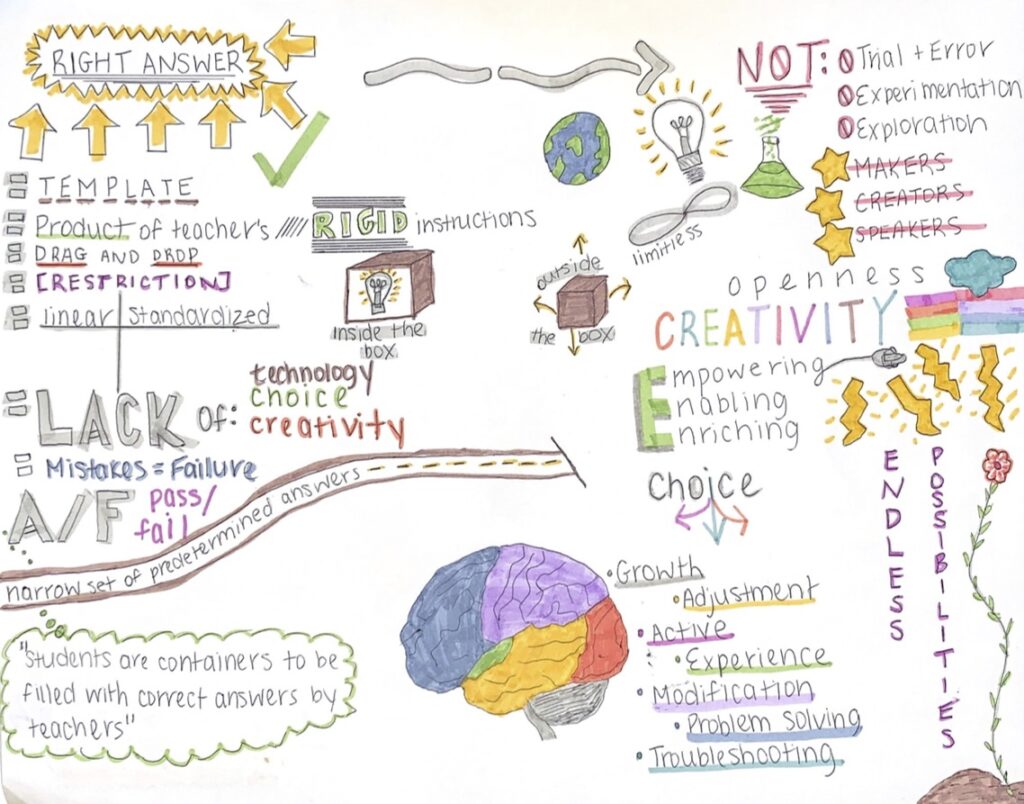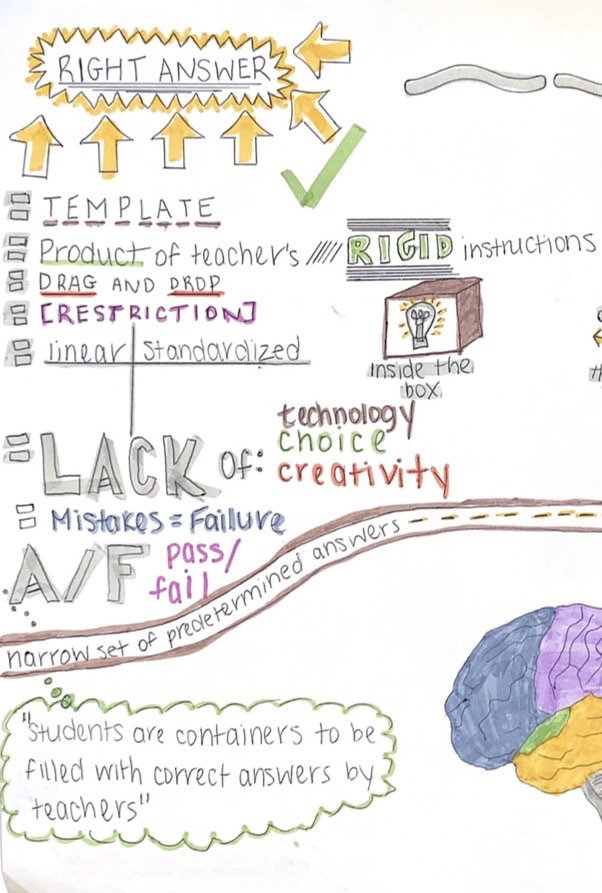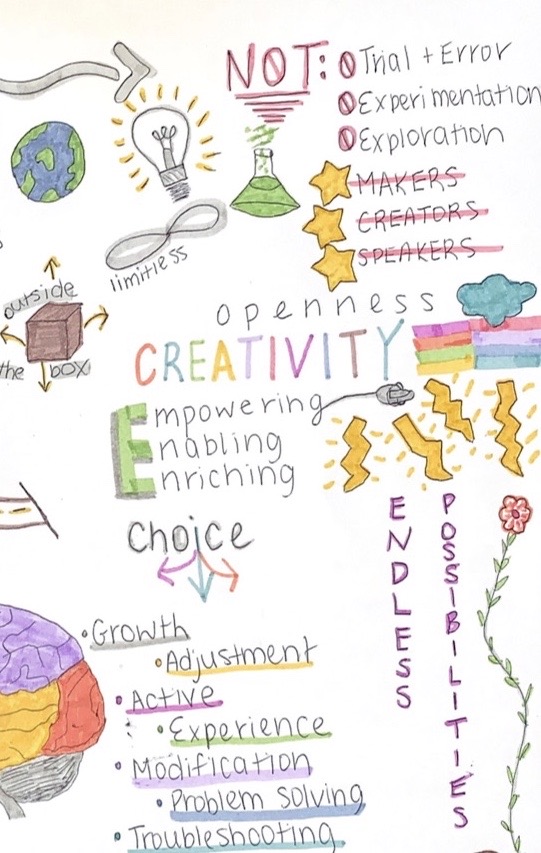
I chose to read Ashley Hinck’s article titled: “Digital Ghosts in the Modern Classroom”. I also decided to create a sketch note to visually portray the main ideas and points in the article as well as to show relationships of concepts. I started my sketch note in the top left corner with “right answer” printed in a large font with bright yellow colouring surrounding it. I chose to begin my sketch note this way because the concept of “right answers” was an important theme in the article. Hinck explains that a “right answer” is a structured element and a product of the teacher’s rigid instructions. This leads to assignments having essentially the same characteristics: drag-and-drop, templates, lack of technology, lack of choice, lack of creativity. Hinck describes that this is due to teachers portraying that there is, “a narrow set of predetermined correct answers” (Hinck, 2018) which leads to linear and standardized answers as well as a restricted possibility of right answers. These ideologies are all shown on the left hand side of my sketch note.

The opposite side of my sketch note shows the opposite view of predetermined correct answers. It involves teachers encouraging students to be makers, creators, and speakers. Furthermore, it inspires trial and error, experimentation, and exploration. This way of thinking inspires creativity, choices for students and an endless possibility of correct answers for students. This view of learning and evaluation empowers, enables, as well as enriches the learning experience of students.

Personally, I have always been a visual person who learns best using visual strategies and tools, however, I have rarely had the opportunity to submit an assignment in a way that is able to heighten my learning and understanding. High-graded assignments are normally those that provide in-depth explanations of concepts and ideas, but are rarely those that provide visuals or demonstrations because these strategies are harder to place on a grading scale.
Finally, I would like to explain my reasoning for placing the quote, “Students are containers to be filled with correct answers by teachers” (Hinck, 2018) on the bottom left hand corner. This quote sums up the main idea of the article which is that right answers are limited and restricted to non-creative tasks that do not involve experimentation, exploration, or trial and error. Having a narrow set of “predetermined correct answers” limits creativity, choice, and openness of students. I agree with Hinck’s point of view and will try my hardest to ensure that I am not continuing the trend of narrow set of right answers when I become a teacher. I will always try to keep things new and exciting in my classroom by introducing educational technologies, creative assignments/projects, as well as differentiated evaluation to encourage experimentation and exploration.
